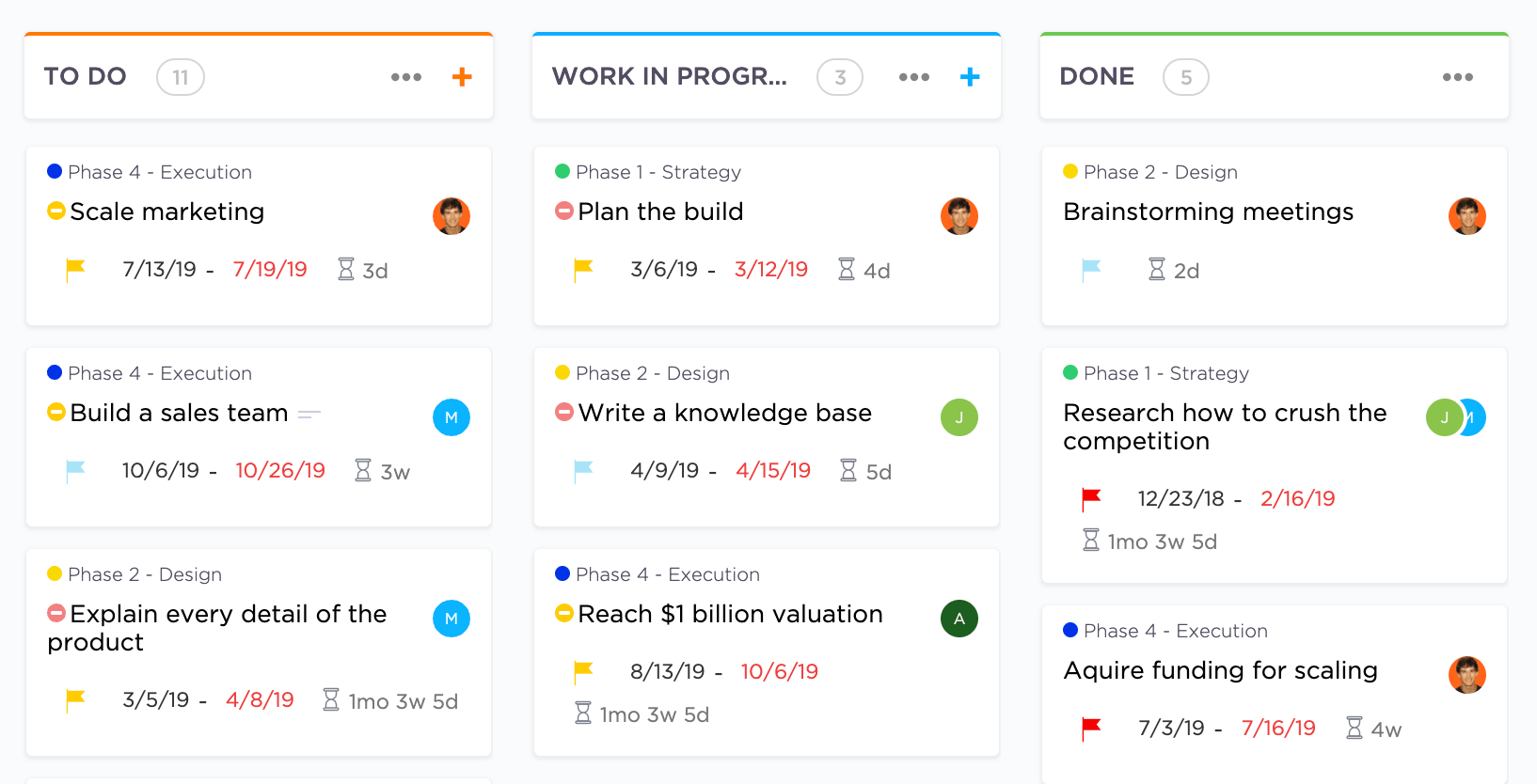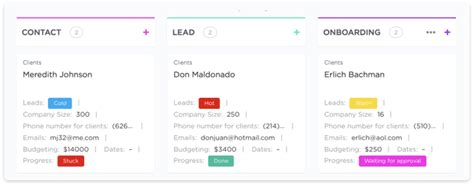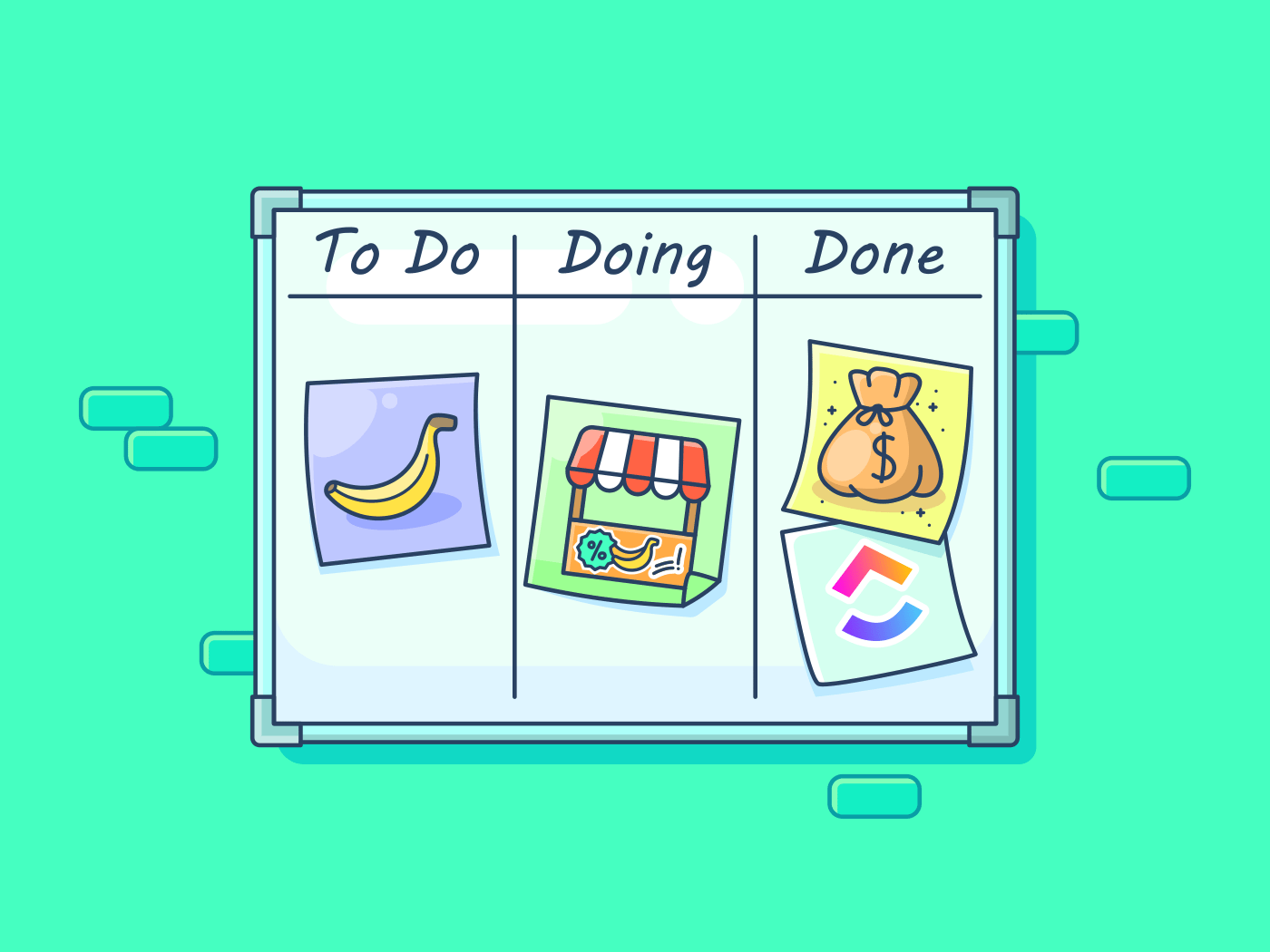طريقة كانبان هي واحدة من أسرع الطرق نموًا إدارة المشاريع الأساليب. استخدمت شركات مثل BBC و Pixar و Spotify منهجية إدارة المشاريع هذه!
إن كانبان المنهجية سهلة للتعلم!
ما هي منهجية كانبان، وكيف يمكنك تطبيقها؟
في هذه المقالة، سنلقي نظرة على منهجية إدارة المشاريع هذه، ومبادئها الأساسية وعملياتها الأساسية وإيجابياتها وسلبياتها. كما سنستعرض أيضًا العديد من المساهمين الخبراء بأفكارهم حول كيفية تنفيذهم للوحات كانبان لمشاريعهم.
وكمكافأة، سنسلط الضوء أيضًا على أفضل برامج إدارة مشاريع كانبان لتنفيذ هذه المنهجية!
ما هي إدارة مشروع كانبان؟
كانبان هو إدارة المشاريع المرئية أولاً طريقة تعتمد على منهجية Agile.
ما هي طريقة أجايل؟ إدارة المشاريع الرشيقة هي طريقة لإدارة المشروع حيث تقوم بتقسيم مشروعك إلى دورات تطوير أصغر تستمر من 1-4 أسابيع.
وبمجرد اكتمال كل دورة، تقوم بتقديم إصدارات من منتجك إلى عملائك والحصول على ملاحظاتهم بشأنه، ودمج تلك الملاحظات في الدورة التالية.
كيف تختلف الأجايل عن إدارة المشاريع العادية؟
تتضمن عملية تطوير البرمجيات التقليدية:
- إنشاء خطة المشروع
- تسليم المنتج النهائي
تقسم منهجية "أجايل" المشروع إلى دورات أصغر، بحيث يمكنك:
- إجراء التغييرات بسرعة وتحسين المخرجات قسمًا تلو الآخر مقابل الانتظار حتى نهاية المشروع
- دمج العملاء في جميع مراحل عملية التطوير
ما هي طريقة كانبان؟
في طريقة كانبان، يتم تصور مهام مشروعك على شكل ملاحظات لاصقة (تُعرف باسم بطاقات كانبان) على لوحة (تُعرف باسم لوحة كانبان).

(مصدر الصورة: easyprojects.net )
نظرًا لأن كل شيء مرئي على البطاقات، يمكنك رؤية العمل الذي يقوم به فريقك في الوقت الحقيقي. يمكنك أيضًا الحصول على لمحة عن الاختناقات المحتملة - مما يساعدك على التعامل معها قبل أن تتسبب في أي تعطيلات.
من أين جاء كانبان؟
في أربعينيات القرن العشرين، طور مهندس تويوتا، تاييتشي أوهنو، نظام إنتاج "في الوقت المناسب"، يعتمد على التواصل المرئي، وهو نوع من نظام كانبان اليوم.
كيف حولت منهجية كانبان شركة تويوتا:
- ألغت جميع الأعمال المهدرة وركزت على ما هو مطلوب
- جعل عملية الإنتاج أكثر كفاءة
- جعل الفرق أكثر إنتاجية
وبسبب هذه الفوائد، يستخدم الآلاف من مديري المشاريع اليوم نظام كانبان!
المكونات الأربعة الرئيسية لمنهجية إدارة مشاريع كانبان ## المكونات الأربعة الرئيسية لمنهجية إدارة مشاريع كانبان
1. لوحة كانبان
تعتمد فرق كانبان بشكل كبير على لوحة كانبان. لوحة كانبان هي لوحة مادية أو رقمية تستخدم من أجل:
- تصور جميع الأعمال في المشروع
- تحسين سير عمل الفريق
تنقسم لوحة كانبان الأساسية إلى ثلاثة أعمدة:
- المهام التي يجب إنجازها: المهام التي يجب إنجازها
- عمل قيد التنفيذ: المهام التي يجري العمل عليها حاليًا
- تم إنجازها: المهام المنجزة

بناءً على سير عملك، يمكنك الحصول على أكبر عدد من الأعمدة لاستيعاب العمليات الفريدة لفريقك مع لوحة كانبان على الإنترنت
لقد قمنا بتجميع قائمة تضم 20 مثالاً على لوحة كانبان لمزيد من الأفكار
2. بطاقات كانبان
وفقًا لمنهجية كانبان، فإن كل عنصر عمل أو مهمة يجب أن يتم تمثيلها كبطاقة منفصلة على اللوحة.
يمكن تصور بطاقة كانبان كبطاقة لاصقة مادية أو افتراضية يمكن أن تنتقل إلى عمود آخر مع تقدم العمل.

تحتوي بطاقة كانبان على معلومات حول عنصر عمل معين، مثل:
- وصف موجز للمهمة
- المسؤول عن المهمة
- المدة المقدرة للمهمة
إذا كنت تستخدم برنامج كانبان يمكن أن تتضمن هذه البطاقات معلومات مهمة أخرى قيّمة مثل مهام فرعية والمعلومات الفنية
3. نقطة الالتزام
يحتوي عمود "ما يجب القيام به" على المهام أو اقتراحات العملاء التي يجب العمل عليها.
نقطة الالتزام هي اللحظة التي يتم فيها التقاط عنصر عمل أو مهمة من عمود "المهام" والعمل عليها من قبل الفريق.
_لماذا تحتاج إلى نقاط الالتزام؟
تمنح نقاط الالتزام فريقك وعملائك فكرة عن:
- متى بدأ العمل على المهمة
- الوقت المقدر للتسليم
إنها في الأساس معالم تساعد فريقك على معرفة متى بدأت الأمور.
4. نقطة التسليم
نقطة التسليم هي اللحظة التي يتم فيها تسليم المنتج إلى العميل.
هدف كل فريق كانبان هو نقل البطاقات من نقطة الالتزام إلى التسليم بأسرع ما يمكن
المبادئ الأساسية لإدارة مشروع كانبان ## المبادئ الأساسية لإدارة مشروع كانبان
هناك خمسة مبادئ تحدد منهجية إدارة مشروع كانبان. دعونا نلقي نظرة عليها جميعًا:
1. تصور سير العمل
في كانبان، الرؤية هي كل شيء. 👀
في الواقع، "كانبان" باللغة اليابانية تعني حرفياً "الإشارة المرئية"!
إليك ما تصوره طريقة كانبان:
- جميع المهام الموجودة في المشروع
- تدفق العمل من مرحلة إلى أخرى
من خلال تصور سير العمل الخاص بك، يمكنك عرض الخطوات اللازمة لتحويل مشروعك من مجرد فكرة إلى منتج نهائي!
يساعد هذا النهج المرئي أولاً مدير مشروع كانبان على رؤية ما يعمل عليه كل أعضاء الفريق.
2. تحديد عبء العمل
من المتوقع أن يعمل أعضاء فريق كانبان بوتيرة سريعة، ولكن هذا لا يعني أن عليهم العمل على مليون مهمة في وقت واحد!
_أفضل طريقة لإيقاف هذا الأمر؟
الحد من حجم العمل الذي يمكن لفريقك القيام به في وقت واحد.
هذا هو السبب في أن معظم فرق كانبان لديها حد محدد لعدد الأشياء المسموح لهم بالعمل عليها في وقت واحد.
3. تحديد أولويات تدفقات المشروع
على عكس أي منهجية أخرى لإدارة المشاريع، فإن كانبان على عكس أي منهجية أخرى لإدارة المشاريع يتعلق بـ إدارة المشاريع وليس الأشخاص
تعتمد طريقة كانبان على إنشاء سير عمل سلس والحفاظ عليه.
إذا كان العمل يتدفق بسلاسة من مرحلة إنتاج إلى المرحلة التالية، يمكن للفريق إنهاء المشروع بشكل أسرع. وبهذه الطريقة، يقل التركيز على أعضاء الفريق الفرديين ويزداد التركيز على سير عمل المشروع بشكل عام.
4. اجعل العمليات شفافة
لاعتماد كانبان، يحتاج فريقك إلى تحديد جميع العمليات التي ينطوي عليها المشروع بوضوح.
إذا قمت بتحديد جميع العمليات، فلن يتعثر فريقك أبدًا لأنهم سيعرفون ما يجب عليهم فعله.
فقط عندما يتم استيفاء جميع هذه الشروط، يمكن لفريقك أن يقول أنك أكملت المهمة.
5. حافظ على حلقات التغذية الراجعة
تشجع منهجية كانبان أعضاء الفريق على التحدث بصوت عالٍ
ألكسيس نيكول وايت، مدير مشروع أول معتمد (PMP) وسكروم ماستر (SMC) ومستشار تسليم المشاريع في ANW للإعلام والاستشارات تستخدم لوحات كانبان لنفس الغرض.
"لقد استخدمنا لوحات كانبان لمراقبة التقدم المحرز في بيئاتنا الرشيقة. فخلال اجتماعاتنا اليومية، نستفيد من اللوحة كخط سير عمل مرئي لحالة مهمتنا. نحن قادرون على مراجعة العمل الجاري ومناقشة أي عوائق وتحديد بنود العمل التي يجب اتخاذها في الخطوات التالية".
مثل فرق سكروم ، تعقد فرق كانبان اجتماعات قصيرة مدتها 15 دقيقة لمناقشة:
- ما قام به كل عضو من أعضاء الفريق في اليوم السابق
- ما الذي سيعملون عليه اليوم
- المشاكل التي واجهتهم
من خلال الانفتاح والشفافية، يمكن لفريق كانبان التأكد من أن الجميع على علم بما يجري في المشروع. وعندما يعرف الفريق بأكمله المزيد عن المشروع، يمكنهم السعي نحو التحسين المستمر.
ملاحظة: يقوم مدير مشروع كانبان بتنظيم هذا الاجتماع - يشبه إلى حد كبير دور مدير مشروع سكروم في تنظيم اجتماعات سكروم اليومية.
تحقق من هذه
_/مرجع/ https://clickup.com/blog/project-management-examples// أمثلة على إدارة المشاريع *%! يتيح لك عرض جميع مهام أعضاء فريقك بتنسيق بطاقة تقرير
- عرض التقويم: عرض جدولك اليومي/الأسبوعي/الشهري وتحريره
- عرض التقويم: عرض خطة مشروعك على شكل مخطط جانت
- وضعي: عرض المهام المخصصة لك فقط
تحقق من الاختلافات بين مخططات كانبان ومخططات جانت .
الخلاصة
كانبان ليس علمًا صاروخيًا!
إنها منهجية سهلة للغاية لإدارة المشاريع.
سواء كنت تستخدم لوحة كانبان الشخصية لإدارة المهام أو إدارة مشاريع متعددة في وقت واحد، فهي منهجية يمكن أن تساعدك على إنجاز عملك.
ولتنفيذ كانبان بفعالية، تحتاج إلى برنامج إدارة كانبان.
يحتوي ClickUp على جميع الميزات التي تحتاجها لإدارة سير عمل كانبان وإنشاء لوحة كانبان. سيساعدك هذا البرنامج على إبقاء فريقك على اطلاع دائم بالمهام، ونقل المهام بسهولة، والتكيف مع تغييرات المشروع بسرعة. اشترك اليوم مجاناً وتأكد من أن عملية إدارة مشروعك لا تختل أبدًا!

